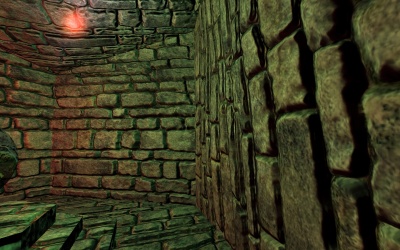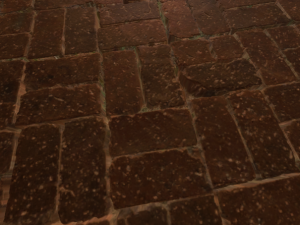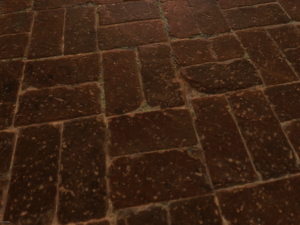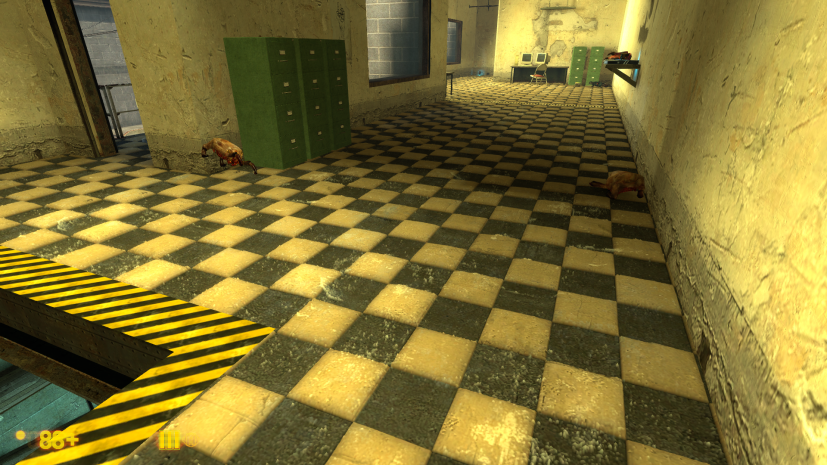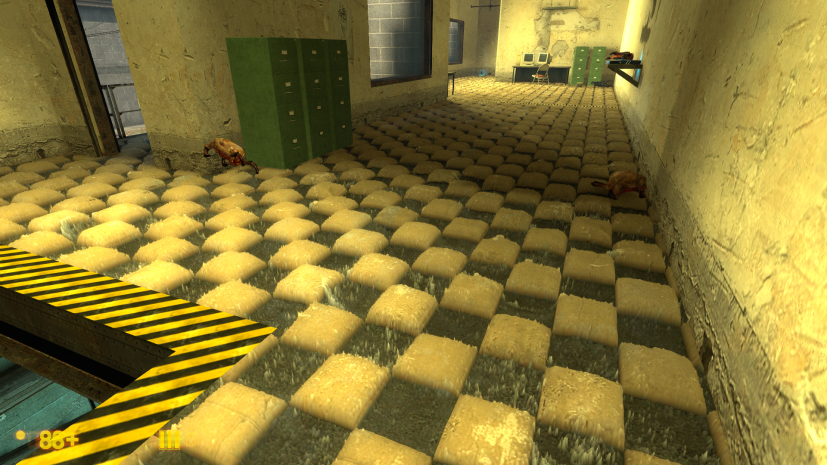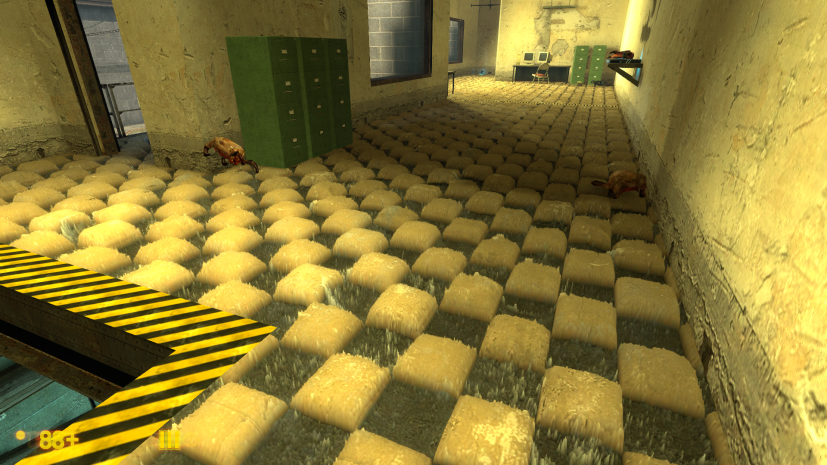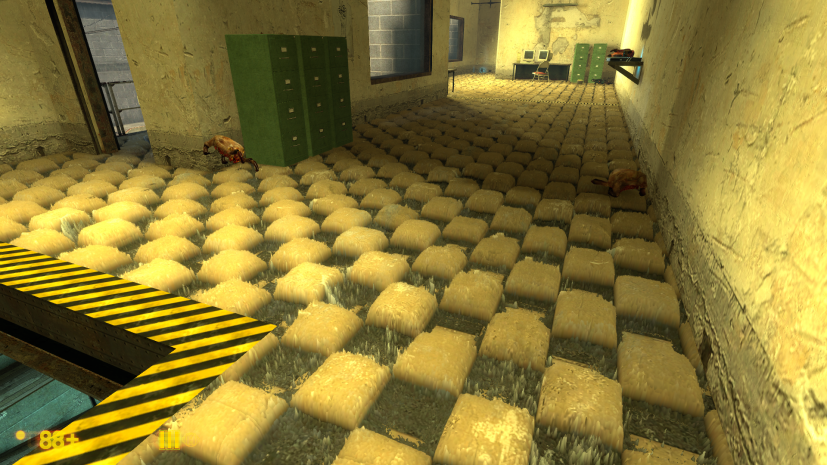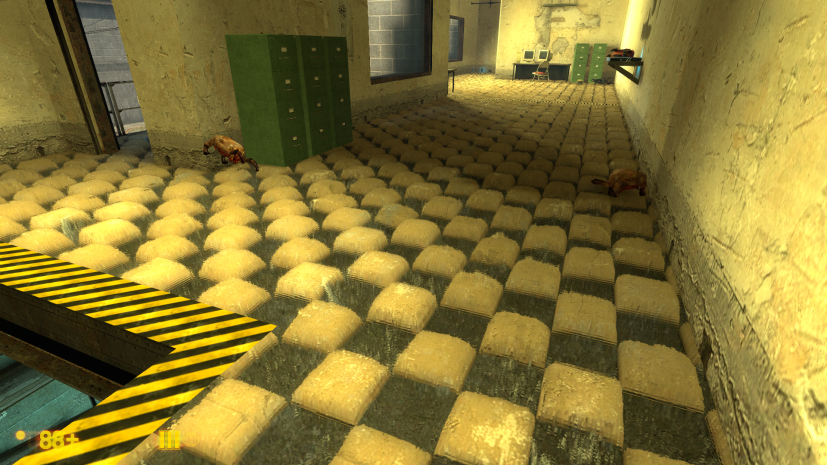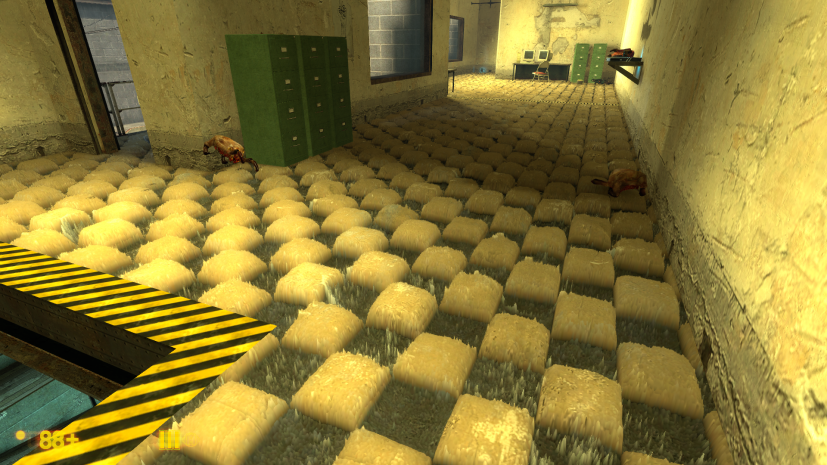Parallax mapping
Parallax mapping (also known as offset mapping or virtual displacement mapping) is a shading technique that displaces the individual pixel height of a surface so that when you look at it at an angle, the high points will obscure the low points behind them, making it look three-dimensional. The height data for each pixel comes from a $parallaxmap texture, which needs to be created for each parallax mapped material.
Parallax mapping is an enhancement of the bump mapping technique. It is only worthwhile for textures that have a depth of at least a few centimeters, like deep-set bricks or stone.
Creating a parallax mapped material
Creating a heightmap
Regardless of the way you are going to render them, creating parallax mapped materials always starts with creating a heightmap.
Adding a parallax map with the built-in support for parallax maps
Add these two lines to your Valve Material (.vmt) file:
$parallaxmap <texture>
$parallaxmapscale <float>
Fill in the path and name of your heightmap on the first line, and a number between 0 and 1 on the second line. This number affects how deep the texture will look. 0.05 is an appropriate value for bricks.
Example VMT:
Adding a parallax map with the Parallax Occlusion Shader mod
First, in the Valve Material (.vmt) file, after the line
"LightmappedGeneric"
add this line:
//"MN_PrlxLightmappedGeneric"
When playing a map with your parallax mapped material, comment out the first line. When compiling a map with your parallax mapped material in Hammer, comment out the last line. This (according to the author of the mod) is a workaround to a glitch in Source SDK.
Finally, add this line to your VMT file:
"$heightmap" "texture name"
Other parameters you may need:
"$heightscale", defines the "depth" of the effect, takes values 0.0—1.0, default=0.4
"$heightmapsample", default=16
Example VMT:
Adding parallax map with the PBR shader
Games running on ![]() Strata Source or with Thexa4's PBR shader installed can use parallax mapping already. All Strata Source games use a similar method.
Strata Source or with Thexa4's PBR shader installed can use parallax mapping already. All Strata Source games use a similar method.
To make the effect work you will need to have these 3 parameters in your VMT:
$parallax <bool> - Enables/Disables parallax mapping.
$parallaxdepth <float> - Controls the intensity of the parallax effect.
$parallaxcenter <float> - Center depth of the Parallax Map.
To make the parallax mapping work you will need to put your Heightmap into the Bump map's alpha channel. See Creating PBR materials for a tutorial on how to do this.
Example VMT:
Parallax occlusion mapping in  Black Mesa
Black Mesa
Black Mesa has its own way of rendering parallax mapping, which was not used in the original campaign, but was used in ![]() Black Mesa: Blue Shift for brick walls and the likes. This material shader parameter can be used for LightmappedGeneric and VertexLitGeneric. Also works with Lightmapped_4WayBlend, useless however.
Black Mesa: Blue Shift for brick walls and the likes. This material shader parameter can be used for LightmappedGeneric and VertexLitGeneric. Also works with Lightmapped_4WayBlend, useless however.
|
|
To make the effect work you will need to have these 3 parameters in your VMT:
$pomscale <float> - Scale of parallax mapping.
$pomminsamples <float> - Min amount of depth samples. The minimum is used at steep glancing angles and far distances. Less samples means more performance, but also worse quality.
|
|
$pommaxsamples <float> - Max amount of depth samples. The maximum is used at shallow glancing angles and close distances.
|
|
To make the parallax mapping work you'll need Heightmap. This is not embedded in the Bumpmap, but is instead kept separate in it's own VTF image.
Example VMT:
See also
- Adding PBR to Your Mod
- Creating PBR materials
- Material Creation
- $parallax
- Normal Map Creation
- Wikipedia:Parallax mapping
